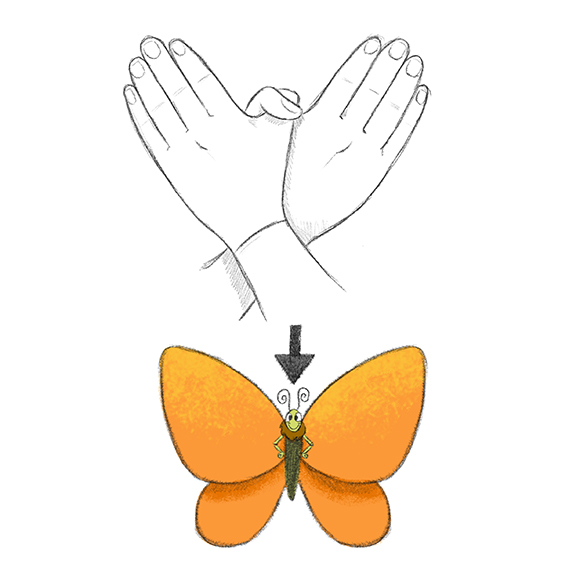Scott Giacomucci, MSS, LSW, CTTS, CET III
A colleague and friend of mine, Scott Giacomucci, MSS, LSW, CTTS, CET III has been up to some pretty amazing things in the world of trauma, psychodrama and PTSD healing. He was kind enough to share some information he put together for his clients with us. The following is a handout on Trauma and PTSD. Let us know what you think and if you have any questions in the comment section below:
Trauma and PTSD
by Scott Giacomucci, MSS, LSW, CTTS, CET III
Client: "What's wrong with me?"
Therapist: "Well, given your symptoms, I think you have Post Traumatic Stress Disorder."
Client: "Post Traumatic Stress Disorder? What are you talking about? Trauma? It doesn't make sense. What trauma did I have? I wasn't in a war or survive a holocaust or anything. I didn't even really get hurt."
This is a typical response following an assessment and diagnosis of this poorly understood disorder. It seems appropriate that this diagnosis - like many other serious medical diagnoses - would be initially met with denial to temporarily protect the person from the reality of his/her own vulnerability. However, in order to effectively treat the condition, the diagnosis eventually needs to be accepted, and in order to accept the diagnosis, one needs to understand it. To this end, I offer the following answers to the two most frequently asked questions: What is trauma? and How bad does it have to be to be traumatic?
What Is Trauma?
According to one of the foremost experts in healing trauma, Dr. Peter Levine,
“Trauma is a basic rupture - loss of connection to ourselves, our families, and the world. The loss, although enormous, is difficult to appreciate because it happens gradually. We adjust to these slight changes, sometimes without taking notice of them at all…although the source of tremendous distress and dysfunction, it (trauma) is not an ailment or a disease, but the by-product of an instinctively instigated, altered state of consciousness. We enter this altered state let us call it "survival mode” when we perceive that our lives are being threatened. If we are overwhelmed by the threat and are unable to successfully defend ourselves, we can become stuck in survival mode. This highly aroused state is designed solely to enable short-term defensive actions; but left untreated over time, it begins to form the symptoms of trauma. These symptoms can invade every aspect of our lives.”
One of the most effective ways to evaluate if you have been traumatized is to answer these simple questions about a significant incident: when you remember the incident, is the memory exactly the same every time? Is the memory unusually fragmented or difficult to recall?
If an answer is yes, then the memory is likely a traumatic one. By no means does one traumatic memory constitute a diagnosis of PTSD; however it does indicate that the traumatic event has been dysfunctionally stored; remains inadequately processed; and continues to cause you distress.
What is a PTSD Diagnosis?
A diagnosis of PTSD is different from most mental-health diagnoses in that it is the only diagnosis that explore and places emphasis on “what happened to you”. The Diagnostic and Statistical Manual of Mental Disorders (5th edition) offers 4 criteria for a PTSD diagnosis.
1. The first criterion relates to the actual trauma:
Directly experiencing the traumatic event(s)
Witnessing, in person, the event(s) as it occurred to others
Learning that the traumatic event(s) occurred to a close family member or friend
Experiencing repeated or extreme exposure to aversive details of the traumatic event(s); this does not apply to exposure through media such as television, movies, or pictures
2. The second criterion involves the persistent re-experiencing of the event in 1 of several ways:
- Thoughts or perception
- Images
- Dreams
- Illusions or hallucinations
- Dissociative flashback episodes
- Psychological distress or reactivity to cues that symbolize some aspect of the event
3. The third criterion involves avoidance of stimuli that are associated with the trauma and numbing of general responsiveness, as determined by the presence of 1 or both of the following:
- Avoidance of thoughts, feelings, or conversations associated with the event
- Avoidance of people, places, or activities that may trigger recollections of the event
4. The fourth criterion is 2 or more of the following symptoms of negative alterations in cognitions and mood associated with the traumatic event(s):
- Inability to remember an important aspect of the event(s)
- Persistent and exaggerated negative beliefs about oneself, others, or the world
- Persistent, distorted cognitions about the cause or consequences of the event(s)
- Persistent negative emotional state
- Markedly diminished interest or participation in significant activities
- Feelings of detachment or estrangement from others
- Persistent inability to experience positive emotions
5. The fifth criterion is marked alterations in arousal and reactivity, as evidenced by 2 or more of the following:
- Irritable behavior and angry outbursts
- Reckless or self-destructive behavior
- Hypervigilance
- Exaggerated startle response
- Concentration problems
- Sleep disturbance
6. The duration of symptoms is more than 1 month
7. The disturbance causes clinically significant distress or impairment in functioning
8. The disturbance is not attributable to physiological effects of a substance or medical condition
According to Levine,
“The symptoms of trauma may be continually present or they may come and go. They may even surface after being hidden for decades. Usually, symptoms do not occur individually, but in clusters grow increasingly complex over time. Unfortunately, they become less and less connected with the original traumatic experience, making it increasingly difficult to trace the symptoms to their cause, and easier to deny the importance of the traumatic event in one's life. However, if we pay attention to these symptoms, for what they are -internal wake up calls - we can address and begin to heal our trauma.”
Although there are pervasive misconceptions about trauma, PTSD is neither rare nor unusual. But unlike seeking treatment for symptoms related to diabetes or glaucoma, seeking treatment for the symptoms of PTSD is somehow interpreted as a weakness. Although this couldn’t be further from the truth, you may believe it. Maybe even said something like it; Real men don’t ask for help; Trauma couldn't possibly affect a well balanced person, there must be something wrong with me; or the all time favorite, It wasn’t really that bad; I should just get over it.
Don’t you think that if that were an option, you would have done just that?
(reference: DSM5 & Linda Curran)
Scott Giacomucci, MSS, LSW, CTTS, CET III is a certified trauma treatment specialist and licensed social worker in Pennsylvania. He is a graduate of Bryn Mawr College where he received his Masters in Social Service (MSS) with a concentration in clinical social work. He facilitates trauma treatment services at Mirmont Treatment Center serving a variety of populations including young adults and emergency responders (veterans, police, fire, etc..) in both individual therapy and group sessions. Scott has a gentle, non-judgmental treatment approach that honors the inherent worth of each individual. He utilizes a blend of treatment modalities including both traditional talk therapy and experiential therapy which have been research-proven as the treatment of choice for treating trauma.
To learn more about Scott Giacomucci and the work he does, you can visit his website at: http://sgiacomucci.com/



























